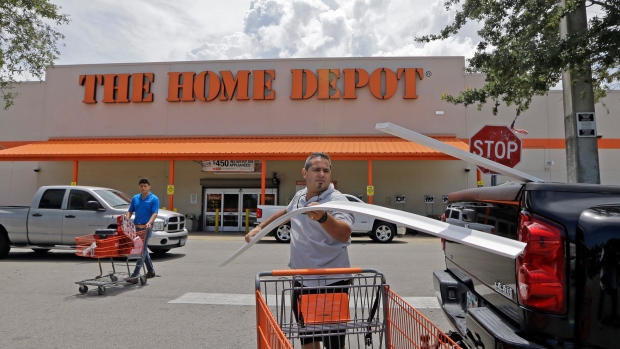Sep 26, 2018
Home Depot expands same-day delivery to keep up with shoppers
, Bloomberg News

As part of an ongoing US$1.2 billion supply-chain upgrade, Home Depot Inc. has started same-day delivery across the U.S. to help it stay relevant with consumers’ need-it-yesterday mentality.
The home-improvement chain had already been using trucks to deliver large items such as building materials from stores in a day or so. Now, aided by startups Roadie Inc. and Deliv Inc. in its top 35 metro markets, online orders made before noon of about 20,000 products -- everything from Halloween decorations to power tools -- can arrive by van or car the same day, starting at a cost of US$8.99.
“We set an overarching goal for our supply chain to be the fastest, most efficient delivery in home improvement,” said Mark Holifield, Atlanta-based Home Depot’s executive vice president of supply chain and product development. Customers “want it cheap, but also want it to be quick.”
To compete with Amazon.com Inc. and other e-commerce companies, retailers are realizing they need to speed delivery of online orders, especially because web purchases are often the fastest-growing part of a chain’s business. This is true for Home Depot, whose online revenue grew more than 20 per cent in this year’s first half.
Now many retailers are using stores to create a so-called omnichannel network, because they are already closer to their customers than big distribution centers that tend to be on the outskirts of cities or in rural areas.
Delivery Centers
Using stores as distribution centers has created options that Amazon can’t replicate, like enabling customers to pick up online purchases at the closest location to avoid shipping fees. It also has given physical locations added value. The current push is shipping web orders from a store, with a heavy focus on groceries by retail giants such as Walmart Inc.
Lowe’s Cos., Home Depot’s smaller competitor, is just now testing same-day delivery in a few markets and does offer next-day shipping for in-stock appliances. Marvin Ellison, its new chief executive officer and a former Home Depot executive, has made revamping the supply chain a priority, including hiring a former Walmart manager to run it.
“This is the new table stakes,” said David Schick, director of research for Consumer Edge Research. “This is the next iteration of giving consumers choice. If this decade proves anything, it’s that consumers want control and choice.”
But these kinds of deliveries can be inefficient and costly, with trucks not filled to capacity and taking longer in congested city streets. That’s where firms like Roadie and Deliv come into play. They’ve created Uber-like online platforms that crowdsource delivery from drivers who are independent contractors.
Subsidizing Costs
While that helps reduce costs, Home Depot’s Holifield said the retail giant isn’t passing all of the delivery expense to customers. Thanks to its size -- US$100 billion in annual revenue and rising -- the company can afford to subsidize some of it. It doesn’t hurt that its shares have soared almost 10 per cent this year, closing at a record US$213.85 on Sept. 11.
“Delivery can be expensive,” Holifield said. “What we look at is delivery helping us to make stronger customer relationships.”
About a decade ago, Home Depot paved the way to be an omnichannel leader by backing away from the rush to open stores, choosing instead to wring more from every existing location. That proved prescient. While other retailers continued to add stores that they now regret with the rise of online shopping, Home Depot forced itself to reconsider every aspect of operations.
That’s led to upgrades in customer service and in-store technology, helping it increase same-store sales 6 per cent on average over the past five years -- gains that any legacy retailer would covet. And now it’s turned to supply chain.
“Everyone is investing in more and more choices for the consumer,” said Schick, the Consumer Edge researcher. But Home Depot is “ahead on the complete omnichannel experience.”


